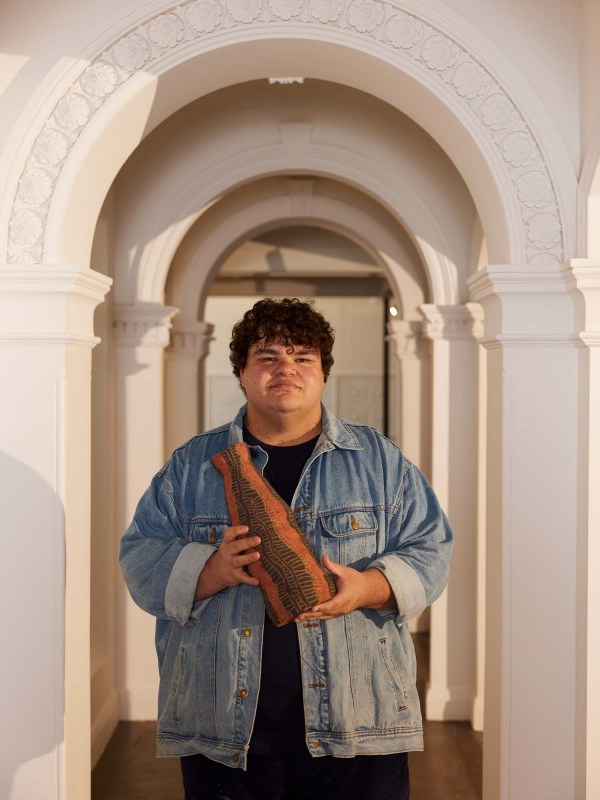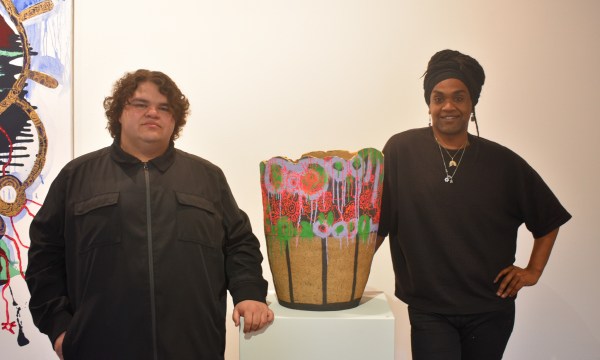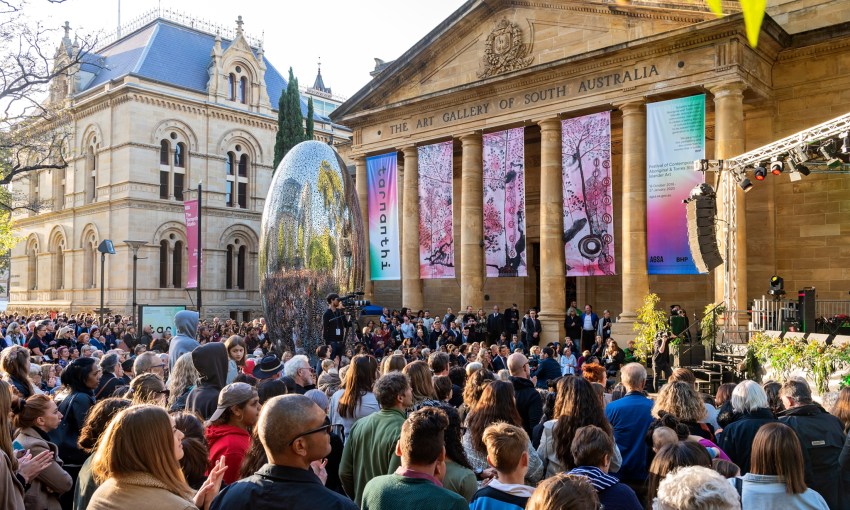It’s been two months since the Aboriginal and Torres Strait Islander Voice to Parliament bid failed in the referendum. CityMag checked in with First Nations-led festival Tarnanthi to see how it's moving forward.
Voice through art at Tarnanthi
The Tarnanthi festival opened in October in the week following the Voice to Parliament referendum result, marking a culmination of months of campaigning that was emotionally laborious for First Nations people.
Nici Cumpston, the artistic director of Tarnanthi, says the first week of the festival was difficult to navigate, with travelling artists arriving and a gallery launch and art fair planned.
“They weren’t things that you could easily cancel,” she says.
“There’s a lot of work to be done and I think that we did this as respectfully as we could.
“[The festival launch] was a way for us to be able to embrace each other and have that time for solace and for discussion.”
In his speech at the festival launch, Attorney General Kyam Mayer thanked the artists for sharing their work with South Australia.
“Your art is your voice and this festival amplifies your voice,” he said.
Nici has been the artistic director since Tarnanthi’s inception in 2013. She explains how the festival name was developed with Kaurna elders, and how they wanted it to encompass growth.
“Tarnanthi is the first side of a seed sprouting, it’s about the first light of day, so it’s about opportunity,” she says.
“It enables the artist to just be who they are and tell whatever their stories are.
“They don’t have to conform to anything, it’s just about them and nurturing them and supporting them.”

Alfred Lowe with his work, Adelaide, 2023 This photo: Henry Trumble
Tarnanthi artists Zaachariaha Fielding and Alfred Lowe work from the APY Art Centre Collective’s Adelaide studio. They’re proud to use their voice through art and don’t feel any different making art post-referendum to how they did before.
“Jumping inside of our works is a safe space for us and it gives you clarity, but also it gives you opportunities to share what you’ve put into the work,” Alfred says.
“We’re lucky to have these mediums and to confess in them and go on to the next.
“Art can educate people, but only to a certain extent; people have to be open to it, people have to be able to receive messages and that comes through education and awareness, and I don’t necessarily think art is the sole driving factor in that – but it plays a role.”
Zaachariaha says opening their exhibition Z MUNU A TITUTJARA at the Hugo Michell Gallery while the referendum result was fresh “felt a little crippling”, but they relied on each other.
“It was a challenge for us as well, because it was the first time in our early careers anyway, to be dragged into something so political and dirty,” Zaachariaha says.
“We don’t just see ourselves as First Nations artists, like we’re creative people – yes, we’ve got Country and we’ve got our identity in our works, but it also is influenced by the universal language with creativity that everyone has access to.”

Alfred Lowe (L) and Zaachariaha Fielding (R) at Hugo Michell Gallery. This photo: Helen Karakulak
Nici says Tarnanthi is always about storytelling through the artist’s voice. An important component reflecting that is the quotes from artists on the walls of the exhibition throughout the art gallery.
“The projects each have such rich depth and knowledge bases sort of embedded within them,” she says.
“In some ways, it’s the only platform for a lot of people to hear and understand is through visual art, and film and dance and all of the cultural performances that we do as Aboriginal people.
“Our aim is to try and keep doing that hard work, continue to push boundaries and provide opportunities.”
Around 300 artists are exhibiting works as part of Tarnanthi at the Art Gallery of South Australia (AGSA) and partner venues.
A major exhibition of Tarnanthi is Vincent Namatjira: Australia in colour, which is a survey exhibition of his portraiture over the last 10 years.
Also on display at AGSA’s Tarnanthi exhibition is dynamic cultural storytelling through Tiger Yaltangki’s take on classic AC/DC rock posters, Elizabeth Close’s sculptural pieces created from reclaimed car bodies and much more.
The statewide Tarnanthi festival runs until January 21.




